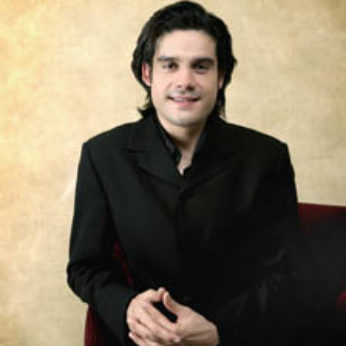Composer: Robert Schumann (b. 1810 - d. 1856)
Performance date: 06/07/2016
Venue: Bantry Library
Composition Year: 1853
Duration: 00:14:22
Recording Engineer: Richard McCullough, RTÉ lyric fm
Instrumentation: vn, va, vc, db, pf
Instrumentation Category:Trio
Instrumentation Other: cl, va, piano
Artists:
Annelien Van Wauwe -
[clarinet]
José Gallardo -
[piano]
György Kovalev -
[viola]

Schumann
was only months from his final breakdown when he wrote these short fairy-tales
over three days at his home in Düsseldorf. It was October,1853. The year had
been punctuated with panic attacks, speech difficulties, aural hallucinations,
insomnia and bouts of depression. In addition to these mental and physical
health problems, the awkward situation regarding his untenable position as
municipal director of music in Düsseldorf was coming to a head.
1853 had brought good things as well. In the spring he had struck up an enduring
friendship with the young violinist Joachim who in turn introduced Schumann to
a then little known composer of twenty: Johannes Brahms. The mutual admiration
between the three men, and more particularly the affection and respect of the
two younger men for Schumann, played an important part in sustaining him
through his difficulties. Indeed, Brahms was staying with the Schumanns at the
time of the composition of the Märchenerzählungen.
The
music from this, the last creative period of his life, reflects the sad weakening of my energies to
which Schumann had attested in one of his diaries. In a letter written nearly
half a century later, Joachim justifies
the suppression from publication of the Violin Concerto, composed for him in 1853.
I cannot speak of it without emotion, he
writes, for it dates from the last six
months before the mental illness of my dear master and friend. Clara
Schumann and Brahms agreed with Joachim that the Concerto should be suppressed
and it was more than 80 years before it was rescued from oblivion.
It is in the context of these honest opinions that Schumann’s late pieces can
best be appreciated. The appeal of the Märchenerzählungen
lies in the access they offer to the inner world of creative fancy to which
Schumann could escape when the outer world was closing in. The Märchenerzählungen are the last of many
pieces – for example Kinderszenen
(1838), Album für die Jugend (1848), Märchenbilder (1851) – written for or
about children. Allusive rather than programmatic, they evoke unnamed episodes
and characters from children’s fairy-tales, as valid an extra-musical source of
inspiration for Schumann as Goethe or Jean Paul
The first piece is song-like in character with melodic ideas shared between the
two solo instruments and the piano’s right hand. The second is an emphatic
march with a gentler middle section and a brief coda. The
extraordinary contrast between the tender calm of the third piece and the troubled
circumstances in which it was written is enough to provoke envy at the
composer’s capacity to escape. It is a beautiful gem which stands out from the
rest of the set. Echoes of the Piano Concerto are immediately apparent in the
final piece, where viola and clarinet intertwine over a gentle piano ostinato in the contrasting middle
section.
Copyright © 2025 West Cork Music. All rights reserved.
Designed and developed by Matrix Internet